If you’re a fan of unique landscapes and natural beauty, the “Grapevine Mesa Joshua Tree Forest” in northwestern Arizona should be on your radar. This hidden gem, situated in the stunning Mohave Desert, is not only a beautiful natural site but also a National Natural Landmark. It’s a perfect stop for anyone traveling in the area, particularly if you’re coming from or to Grand Canyon West.
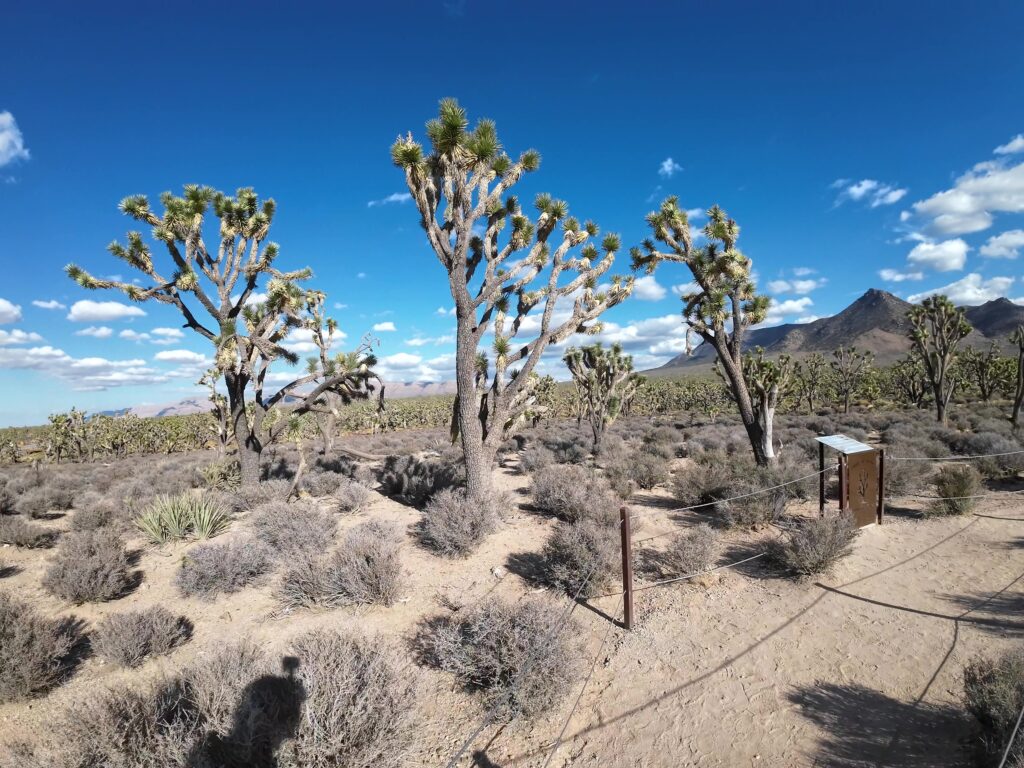
Table of contents
- The Joshua Tree Forest: A Natural Wonder
- A Fascinating Ecosystem: The Relationship Between Joshua Trees and Yucca Moths
- A Historical Connection: The Legend of the Joshua Tree
- A Scenic Drive to the Joshua Tree Forest
- Who Manages the Grapevine Mesa Joshua Tree Forest
- Why You Should Visit the Grapevine Mesa Joshua Tree Forest
- Closing
The Joshua Tree Forest: A Natural Wonder
The Grapevine Mesa Joshua Tree Forest is an expansive collection of these iconic trees, which are not actually trees but rather a species of yucca plant (yucca brevifolia). These fascinating plants thrive in the arid conditions of southwestern North America and are known for their twisted, spiky limbs that rise like alien sentinels from the desert floor. As you walk through this forest, you’ll experience a unique landscape where the Joshua trees stretch out in every direction. You will see their long arms reaching toward the sky in a stark yet beautiful silhouette.
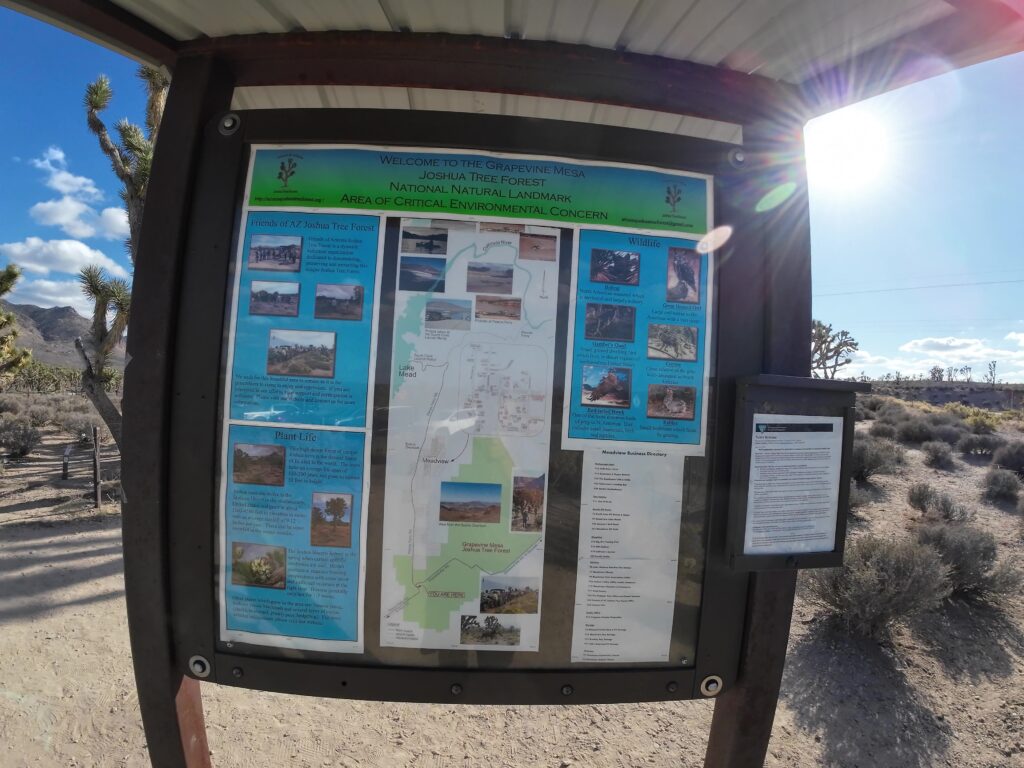
Age Determination
Joshua trees are prominently featured in the forest, making it a standout representation of Mojave Desert ecology. The forest is nearly 900 years old, and each tree lives 150–200 years. Joshua trees grow slowly, adding only 1/2 to 3 inches per year. Figuring out a Joshua tree’s exact age by looking at the trunk of the Joshua Tree is tricky. Joshua Trees also don’t have the usual growth rings we see with other trees. Scientists have to do some math by dividing the tree’s height by how much it grows each year. If a Joshua tree has a lot of branches, it’s probably been around for a while. The average maximum height reaches nearly 50 feet.
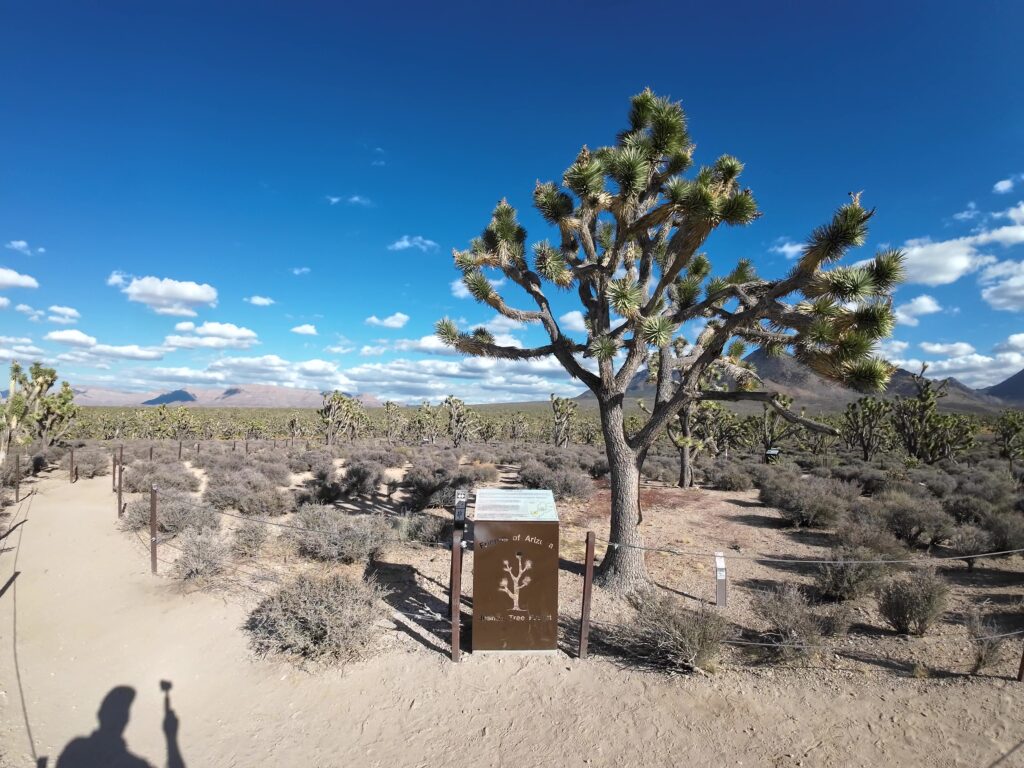
Various Species of Yucca Plants
Did you know there are almost 50 different types of Yucca plants out there? That’s a lot! Each one has its special features like the fruit it grows, the way its flowers and leaves look, and the kind of weather it likes best. It’s like they all have their own personalities! Joshua trees belong to the Agave family and are the biggest among all yucca species.
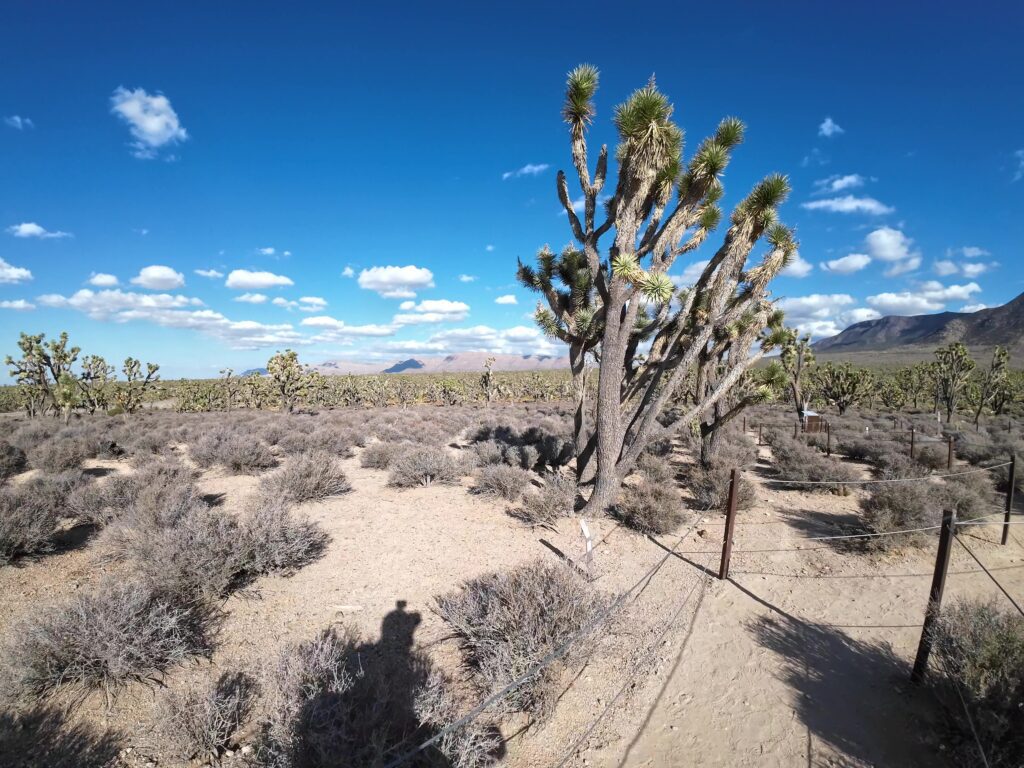
Yucca Plants Thrive in the Desert Dry Climate
Yucca plants have several built-in mechanisms for conserving water in dry climates. To start, their leaves have a waxy coating to help prevent evaporation and water loss. The leaves are also shaped with built-in channels to help direct water to the base of the plant and collect moisture more efficiently. Additionally, as older leaves die they droop down and form a protective barrier around the trunk of the Yucca tree to help prevent sun exposure and conserve water. In other words, they can withstand the rigors of the desert climate.
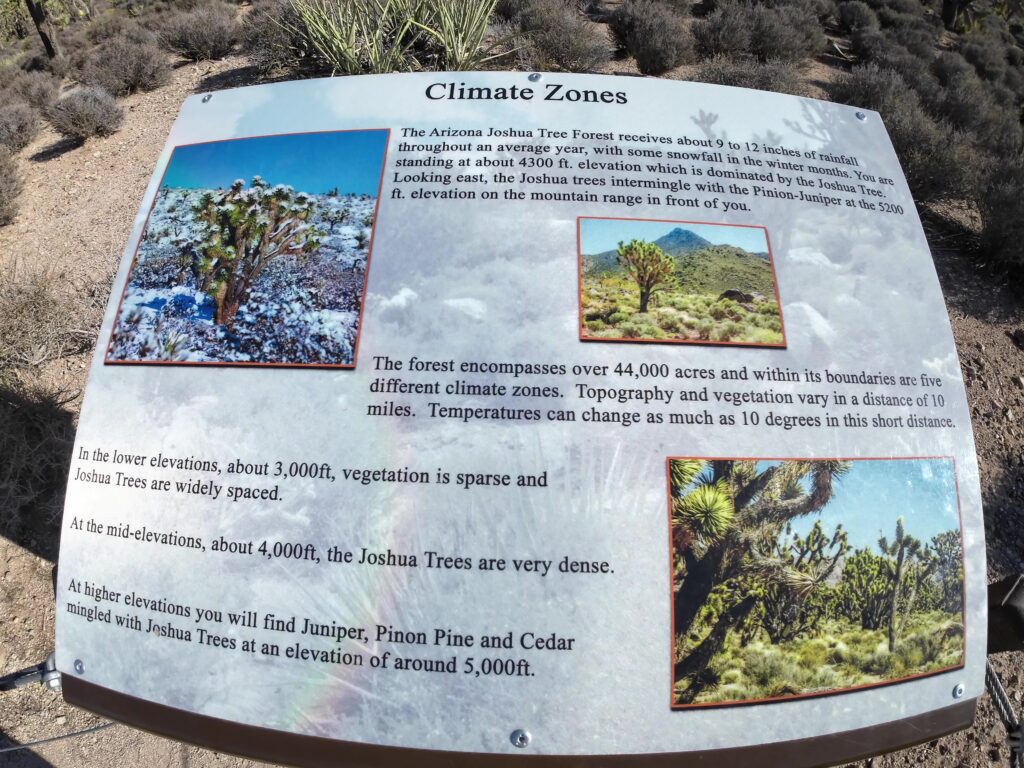
Joshua Trees Have Underground Rhizomes
Did you know that Joshua trees have these cool things called rhizomes? They’re like underground roots that spread out from the tree’s trunk, just a few inches below the ground. These rhizomes can make new sprouts or stems that are exactly the same as the parent tree. Sometimes these new stems can even take over and become the new main tree! It’s a pretty neat way that Joshua trees can make more of themselves.
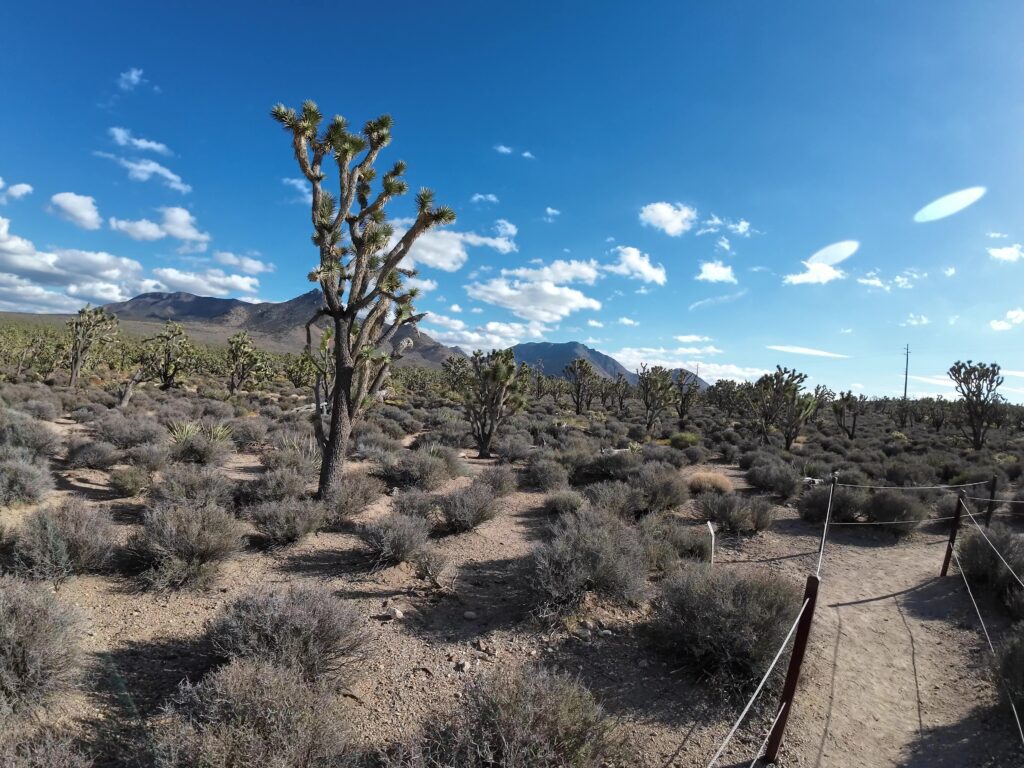
Areas of Critical Environmental Concern for Joshua Trees
The Joshua Tree Forest is in trouble because of a few big problems. First, the park is getting hotter and drier because of climate change. This makes it easier for wildfires to start. Second, new houses and roads are being built near the forest, which is bad news for the Joshua trees. And lastly, some plants don’t belong there, invasive species, that are causing trouble for the Joshua Tree Forest.
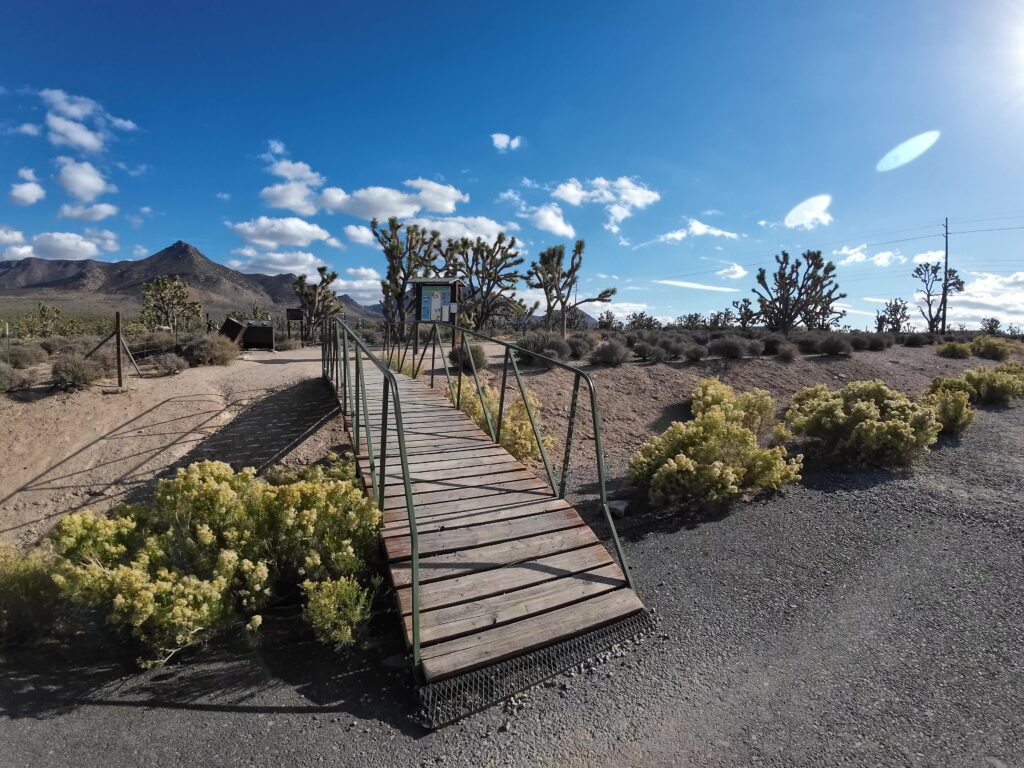
Significance of the Grapevine Mesa Joshua Park
What makes this site even more remarkable is its status as a National Natural Landmark, which highlights its environmental and ecological importance. The site is preserved with support from the Friends of Arizona Joshua Tree Forest Project, ensuring that future generations will be able to appreciate the beauty and ecological significance of these fascinating plants. The National Register of Historic Places recognizes the park on its listing. The Grapevine Mesa Joshua Tree Forest is located in Mohave County, Arizona. The park became a National Natural Landmark in 1967.
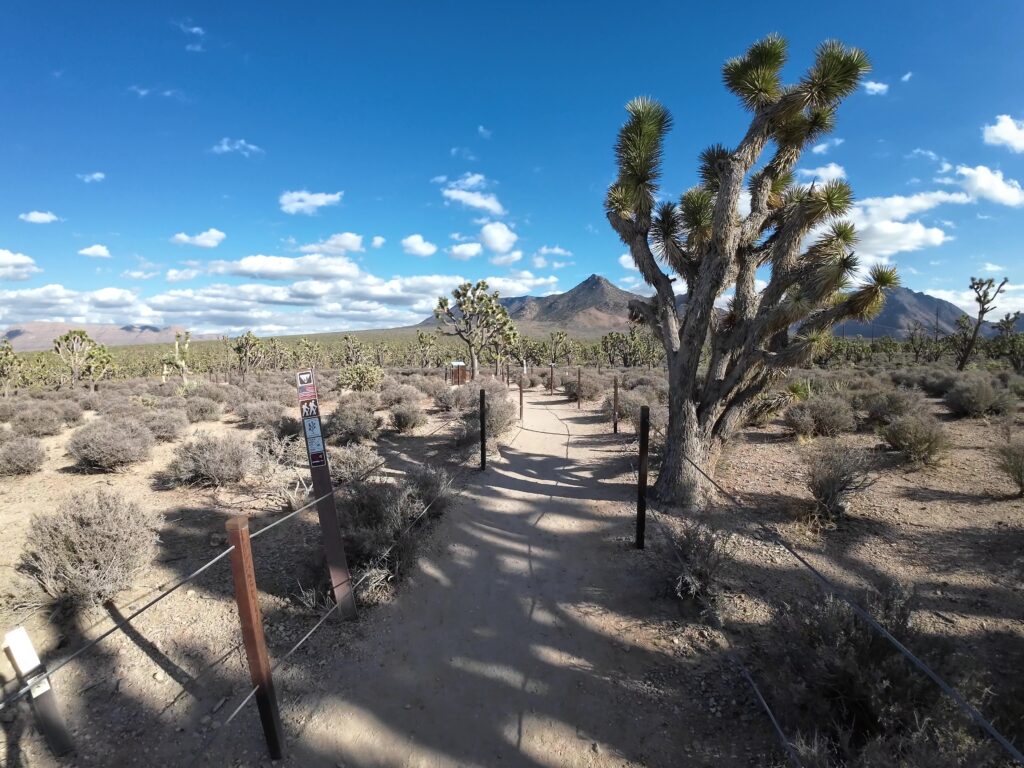
A Fascinating Ecosystem: The Relationship Between Joshua Trees and Yucca Moths
One of the most interesting aspects of the Joshua tree is its mutualistic relationship with the **yucca moth**. This small, nocturnal insect plays an essential role in pollinating Joshua trees. The moth’s larvae rely exclusively on the seeds of the Joshua tree as their food source, while the adult moths pollinate the tree’s flowers, ensuring the plant’s survival. In fact, the entire reproduction cycle of the Joshua tree is dependent on the yucca moth. The other cannot exist without one—a perfect example of nature’s delicate balance.
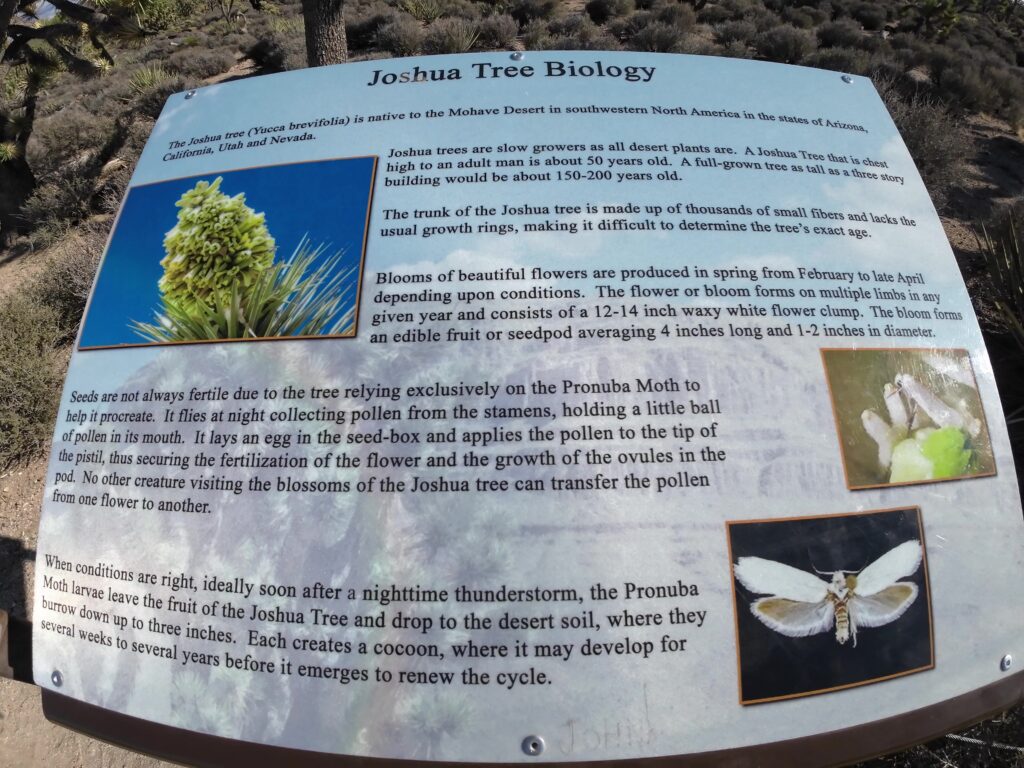
A Historical Connection: The Legend of the Joshua Tree
The name “Joshua Tree” has an interesting origin. According to local legend, early Mormon settlers traveling through the southwestern United States gave these trees their biblical name when they saw them for the first time. They saw the outstretched limbs of the trees as a symbol of the biblical figure Joshua, guiding them westward toward the promise of new lands. Whether or not the legend is true, it certainly adds a layer of mystique to these already enigmatic plants.
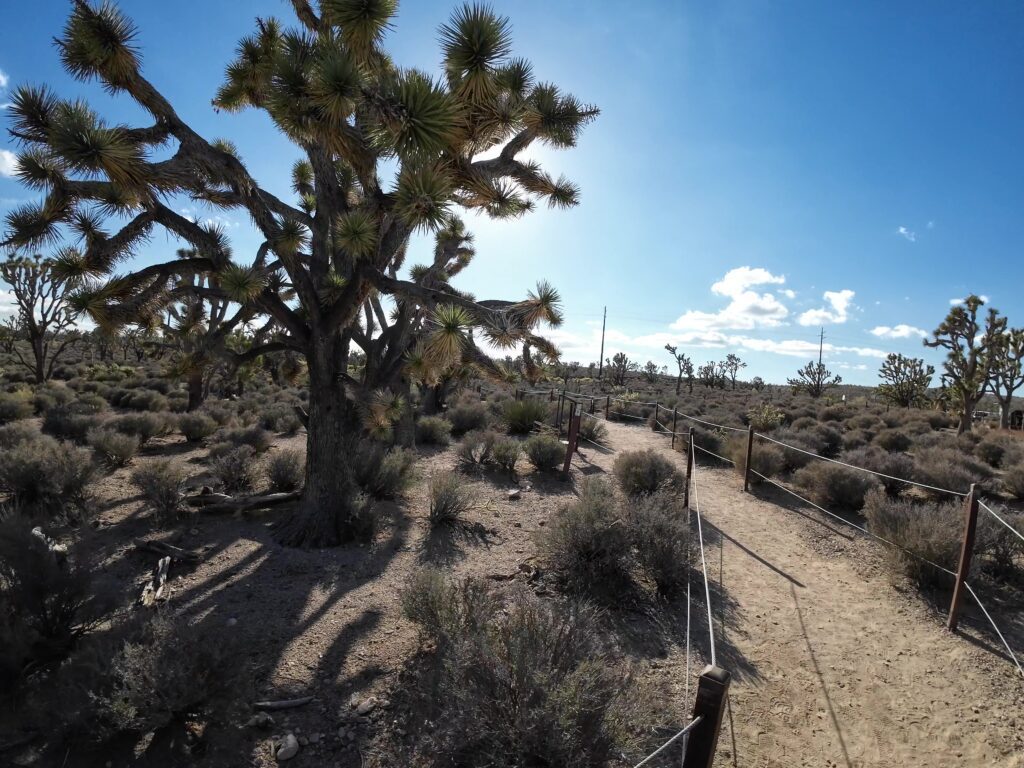
A Scenic Drive to the Joshua Tree Forest
To visit the Grapevine Mesa Joshua Tree Forest, head out from Las Vegas, about 100 miles away. The drive is absolutely stunning, offering sweeping views of the desert landscape and the nearby Lake Mead National Recreation Area. The picturesque landscape between Meadview village, Lake Mead City, and the majestic Grand Wash Cliffs is home to roughly 44,228 acres of Joshua trees that have been valued as a significant natural resource since 1930. Ancient sedimentary rocks form the imposing structure of the Grand Wash Cliffs that overlook the forest below.
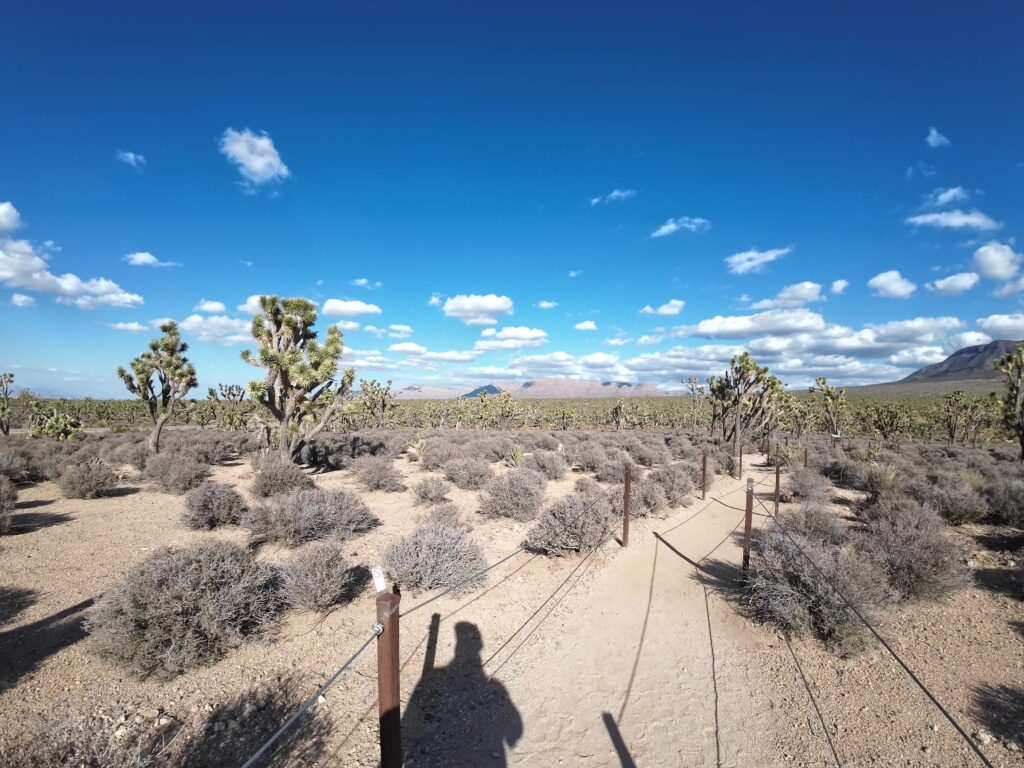
If you’re traveling from the Grand Canyon West Rim, the park makes for a perfect stop on the way back. The scenic route offers plenty of opportunities to pull over, stretch your legs, and take in the surrounding beauty. Although the park and mesa are beautiful, the trail at the park is pretty short so not really worth a drive out here just to visit the park.
If you’re in downtown Las Vegas and want to visit the Grapevine Mesa Joshua Tree Forest, you can take Interstate I-11 South to Arizona Highway 93 and Pearce Ferry Road. This spot is a popular way to get to Grand Canyon West and is used by tour buses, people from other countries, and vans with passengers and cars.
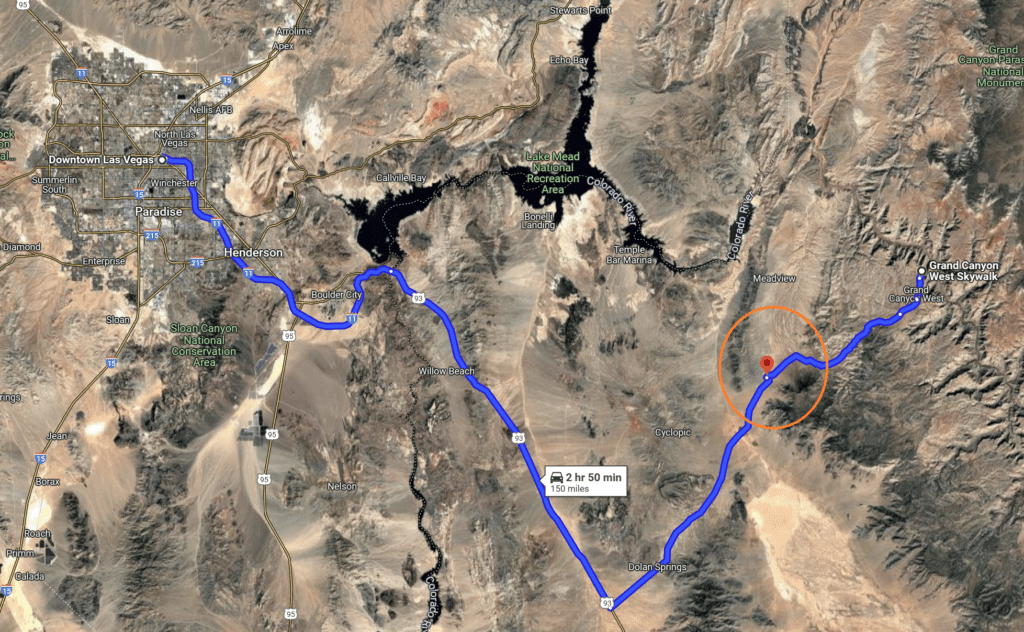
Who Manages the Grapevine Mesa Joshua Tree Forest
The BLM Kingman field office is tasked with overseeing the preservation of the Grapevine Mesa Joshua Tree Forest, a designated National Natural Landmark, placing this particular forest area under their authority for conservation efforts.
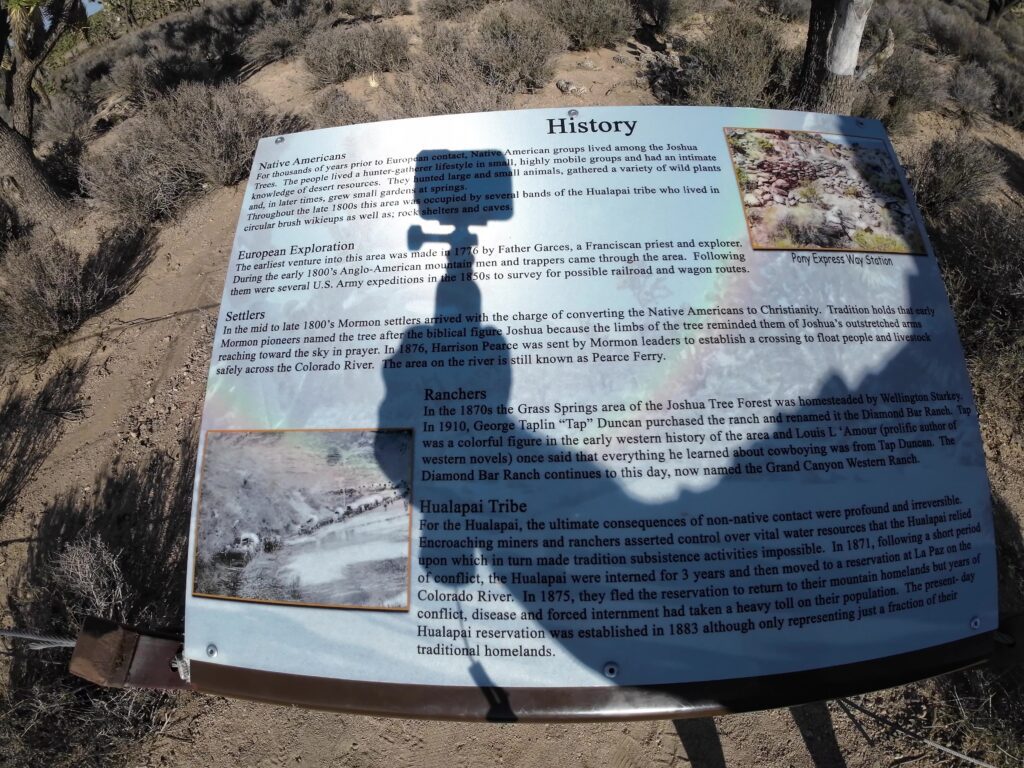
Why You Should Visit the Grapevine Mesa Joshua Tree Forest
Whether you’re a nature enthusiast, a photographer, or just someone looking to explore the outdoors, the Grapevine Mesa Joshua Tree Forest offers a peaceful and awe-inspiring experience. The quiet solitude of walking among these ancient trees, combined with the rich ecological and historical context, makes it a memorable stop on any desert adventure.
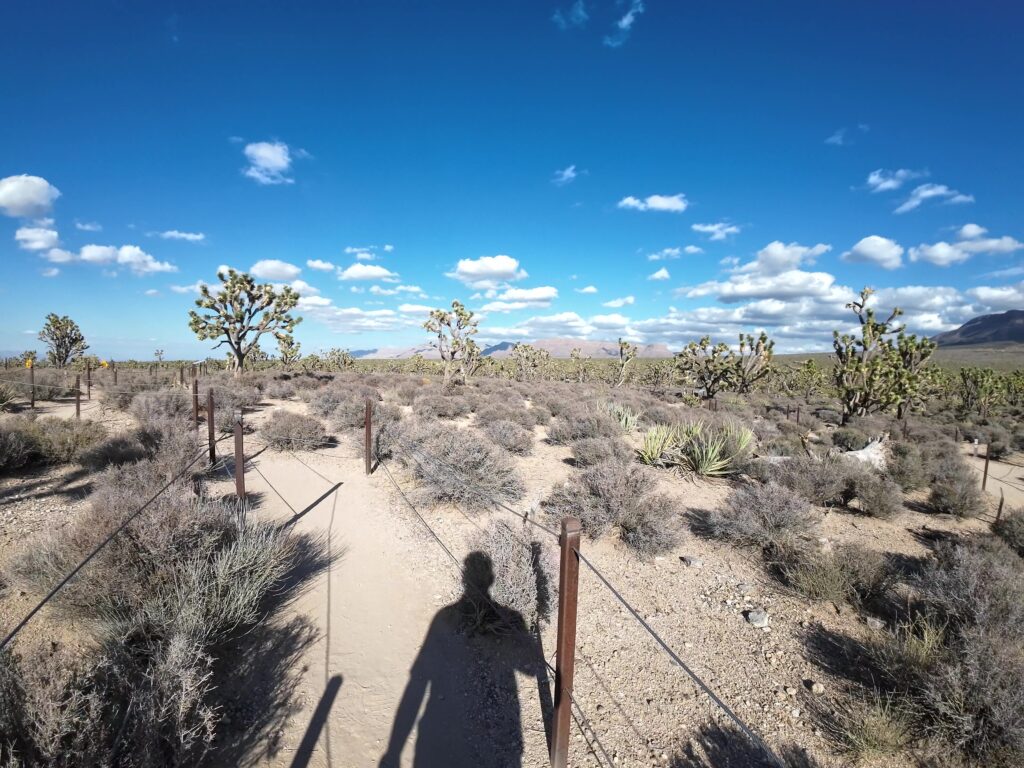
Closing
If you’re ever in the area—whether you’re coming from Las Vegas Off the Strip, the west end of the Grand Canyon, or Lake Mead—take the time to visit this spot. It’s a great way to get out, stretch your legs, and immerse yourself in the beauty of the desert. As we always say, it’s the side attractions like these that often offer the most enriching experiences on a trip.
If you’re planning a trip to Las Vegas and want to experience something unique, the Wild West Horseback Adventure should be on your list. And if you enjoy off-the-beaten-path experiences like this, be sure to check out our other posts covering attractions off the Las Vegas Strip, such as the Valley of Fire State Park, Red Rock Canyon’s Calico Tanks Trail, Grand Canyon West, Historic Hoover Dam Railroad Tunnel Trail, Fremont Street Experience, the Wild West Sunset Horseback Adventure, and the old Ferguson Motel.
If you like this content, you will want to check out our posts here, along with our YouTube videos covering these destinations and many more on Travel with D and E.
Thanks for reading, and we hope this post has inspired you to add the Grapevine Mesa Joshua Tree Forest to your travel list. Until next time, we’ll see you on our travels!

Leave a Reply